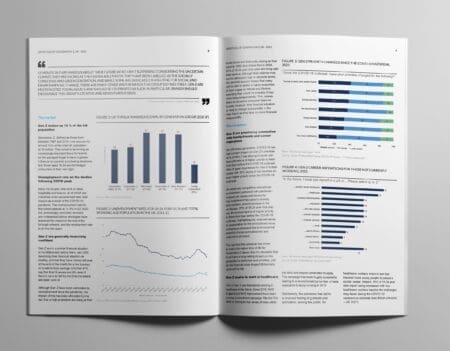Whilst the cappuccino may once have been a morning must have for many, the rise of alternative hot drinks have seen menus double in size in many places. Amidst the variety of choice, in many of its US outlets, Starbucks recently dropped the cappuccino from the menu.
With this in mind, our expert analyst team takes a look at the consumer relationship with coffee and why there could be a gap in a menu near you…

Product innovation and standout is important in a market where almost a fifth of out of home hot drink purchasers say that they prefer coffee shops that have unique products on sale, according to Mintel’s Coffee Shops UK 2014 report. This can go some way to explaining why players like Starbucks are saving menu board space for items such as flavoured lattes and frappuccinos rather than standard cappuccino products.
In the eating out market generally, menu innovation offers a significant opportunity for operators to maximise the potential of rising consumer confidence in 2015 and help them to re-ignite consumers’ willingness to spend on this category.

In Coffee’s “third wave” of global development, younger consumers outside of continental Europe have come to see the Cappuccino as a little old-fashioned, “unsexy” and also anachronistic. This is primarily because they have newer choices – such as the Flat White and Latte – which sit better with the Millennial preference towards smooth and velvety – rather than foamy – milk-based coffee styles.
It will be back though at some point – once people tire of overly milky coffee choices – and yearn for old “classics” which do not overwhelm the taste of the coffee.

Today’s American coffee drinkers are searching for new coffee experiences. Competition is rising in the form of coffee beans imported from increasingly exotic locations, and smaller coffee roasters are using unusual preparation methods for unique taste experiences. Starbucks is feeling the pressure from a slew of smaller, independent and passionate coffee roasters and brewers offering drinks that are more about taste and experience than appealing to the masses.
- In Chicago, Ipsento recently introduced Nitro Coffee, coffee under nitrogen pressure that is served from a tap. The beer-like coffee is bubbly and crosses over from a traditional coffee drink to a refreshing, carbonated beverage.
- The Wormhole Coffee, a coffee shop also based in Chicago, employs a Chemex to manually brew coffee, offering a cup of joe that is free of sediment, oils and fats, and without bitterness.
- Chicago’s Asado uses the ceramic Bee House Dripper to brew its fresh coffee from Tanzania, Brazil and Haiti by the cup.
Helena Childe, Senior Foodservice Analyst at Mintel, is responsible for the UK Foodservice journal at Mintel, providing robust market coverage, in depth consumer research, analysis and strategic recommendations for the restaurant, pub and bar market. Helena regularly presents to clients as well as at industry and press events and frequently contributes towards articles published in the trade press, covering a wide number of foodservice topics.
Jonny Forsyth, Global Drinks Analyst at Mintel, brings ten years of experience working in the marketing industry, with roles at Starcom Mediavest, AB-Inbev, and Trinity Mirror. He is a regular contributor in global and national media outlets such as BBC, CNBC and Bloomberg.
Julia Gallo-Torres, Mintel’s Senior Foodservice Analyst, authors reports that offer insights on consumer attitudes and dining behavior in the foodservice space. Before joining the foodservice team, Julia was part of Mintel’s global food and drink team, where she analyzed and reported on CPG food and drink trends. Prior to joining Mintel, Julia was the managing editor of a food science-based magazine that focuses on ingredients, R&D, technology, new products, foodservice and culinary trends.







































